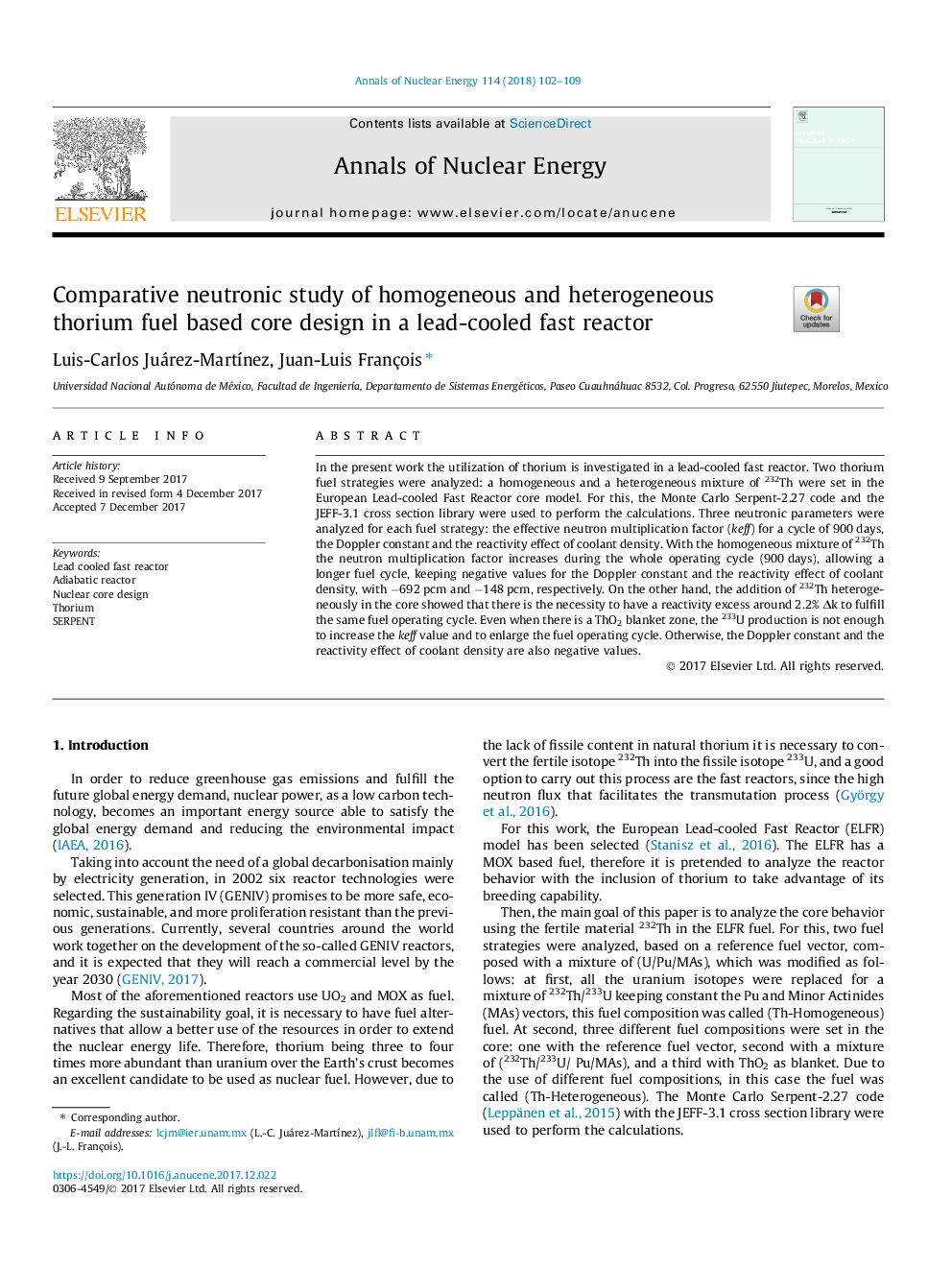| Article ID | Journal | Published Year | Pages | File Type |
|---|---|---|---|---|
| 8067129 | Annals of Nuclear Energy | 2018 | 8 Pages |
Abstract
In the present work the utilization of thorium is investigated in a lead-cooled fast reactor. Two thorium fuel strategies were analyzed: a homogeneous and a heterogeneous mixture of 232Th were set in the European Lead-cooled Fast Reactor core model. For this, the Monte Carlo Serpent-2.27 code and the JEFF-3.1 cross section library were used to perform the calculations. Three neutronic parameters were analyzed for each fuel strategy: the effective neutron multiplication factor (keff) for a cycle of 900â¯days, the Doppler constant and the reactivity effect of coolant density. With the homogeneous mixture of 232Th the neutron multiplication factor increases during the whole operating cycle (900â¯days), allowing a longer fuel cycle, keeping negative values for the Doppler constant and the reactivity effect of coolant density, with â692â¯pcm and â148â¯pcm, respectively. On the other hand, the addition of 232Th heterogeneously in the core showed that there is the necessity to have a reactivity excess around 2.2% Îk to fulfill the same fuel operating cycle. Even when there is a ThO2 blanket zone, the 233U production is not enough to increase the keff value and to enlarge the fuel operating cycle. Otherwise, the Doppler constant and the reactivity effect of coolant density are also negative values.
Keywords
Related Topics
Physical Sciences and Engineering
Energy
Energy Engineering and Power Technology
Authors
Luis-Carlos Juárez-MartÃnez, Juan-Luis François,
